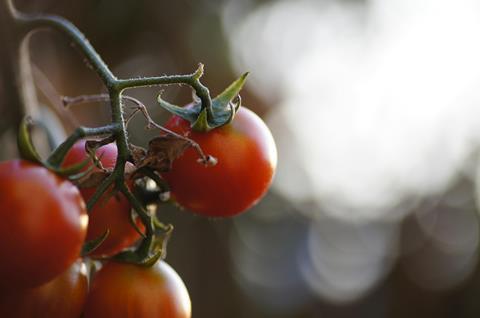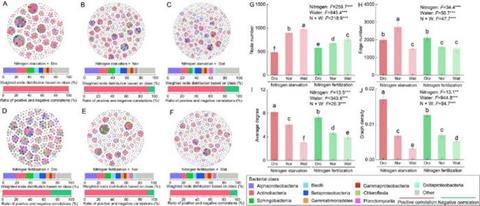Tomatoes, like many crops, often face growth challenges under limited nitrogen and water conditions. A new study reveals that the diversity and complexity of rhizosphere bacterial communities play a crucial role in helping tomatoes absorb multiple essential nutrients under such stresses.

Researchers introduced the concept of a Multinutrient Cycling Index (MNC) to quantify plant nutrient traits and found that higher microbial diversity and a robust core bacteriome significantly improved nutrient uptake. These findings suggest that manipulating rhizosphere microbiomes could be a sustainable strategy to enhance crop performance in fluctuating environments, supporting the development of resilient agricultural systems.
READ MORE: Under the microscope: the rhizosphere
Plants and their root-associated microbiomes form an integrated holobiont, critical for nutrient acquisition and stress tolerance. Although prior research has extensively explored microbial contributions to single-nutrient dynamics, little is known about how bacterial communities collectively influence multiple nutrient traits.
At the same time, industrial agricultural practices have intensified challenges such as nutrient imbalances and water scarcity. Both nitrogen availability and water conditions are key drivers of rhizosphere microbiome assembly and function. However, the complex interplay between microbial diversity, network structure, and plant multinutrient traits remains unclear. Due to these challenges, there is a pressing need to conduct deeper investigations into the microbial mechanisms underlying plant multinutrient acquisition.
Nutrient profiles
A research team from Sun Yat-sen University, China, published their findings (DOI: 10.1093/hr/uhae290) on October 15, 2024, in Horticulture Research. The study, titled “Diversity and interactions of rhizobacteria determine multinutrient traits in tomato host plants under nitrogen and water disturbances,” explored how rhizosphere bacterial diversity and network interactions impact the nutrient profiles of tomato plants. Through controlled greenhouse experiments and absolute quantitative sequencing, the team demonstrated that specific microbial community features strongly predict plant nutrient status, offering a new perspective for microbiome-based agricultural innovation.
The researchers grew tomatoes under six different nitrogen and water regimes and measured multinutrient traits using the Multinutrient Cycling Index (MNC). They found that water supply had a stronger influence than nitrogen fertilization on microbial diversity and network complexity.
A core bacteriome consisting of 61 genera—including Candidatus Koribacter and Streptomyces—persisted across all conditions and significantly contributed to nutrient uptake. Higher rhizobacterial diversity and core taxon abundance were positively correlated with MNC, while increased network complexity (average degree and graph density) was negatively associated with MNC.

Random forest analysis revealed that core taxa such as Burkholderia, Edaphobacter, and Streptomyces were key drivers of specific nutrient concentrations. Structural equation modeling further indicated that microbial diversity and network features mediated the effects of nitrogen and water treatments on multinutrient absorption. These results highlight the potential to enhance plant resilience and nutrient efficiency by engineering rhizosphere microbiomes, especially under climate-induced stresses like drought and nutrient limitations.
Rhizosphere microbiome
“Our findings demonstrate that fostering a diverse and functionally interactive rhizosphere microbiome is essential for optimizing plant nutrient uptake under environmental stresses,” said Dr. Ruo-Han Xie, corresponding author of the study.
“Rather than focusing solely on adding fertilizers, agricultural strategies should prioritize maintaining soil microbial biodiversity and network structure. This work opens exciting possibilities for microbiome engineering to create more sustainable and resilient farming systems, particularly as global challenges like water scarcity and soil degradation intensify.”
This research lays a foundation for developing microbial-based approaches to enhance multinutrient acquisition in crops. By selecting and promoting specific rhizobacterial communities, it may be possible to breed or engineer soil ecosystems that naturally boost plant health and productivity, reducing dependence on chemical fertilizers. Future agricultural practices could incorporate microbiome management strategies to address issues like drought resistance, nutrient deficiencies, and soil fertility decline. These findings also contribute to advancing sustainable farming models, helping to secure global food security while minimizing the environmental footprint of crop production.







No comments yet